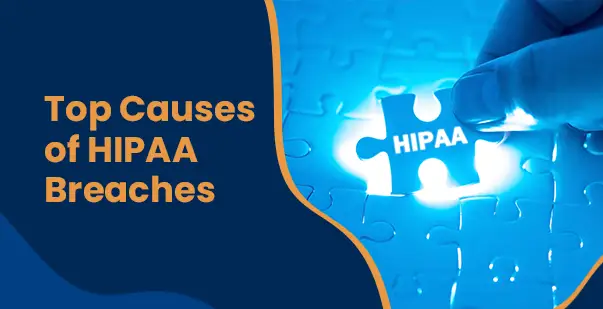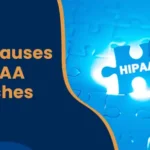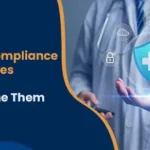What Drives HIPAA Breaches in 2025: How Healthcare Teams Can Stay Ahead

October 1, 2025
The 2025 HIMSS Healthcare Cybersecurity Survey found that nearly 70% of hospitals faced a HIPAA breach in just the first quarter.
Let’s dig into the most common HIPAA violations plaguing healthcare right now, and share practical advice for healthcare professionals looking to avoid future breaches.
Despite all the tech upgrades and shifting workflows, the 2025 HIMSS Healthcare Cybersecurity Survey highlights a familiar culprit: too many HIPAA incidents still boil down to simple mistakes and preventable slip-ups.
What Are the Major Triggers Behind HIPAA Breaches in 2025?
HIPAA compliance is becoming more complex in 2025. The Health Insurance Portability and Accountability Act keeps setting a high bar for how organizations protect patient data – but modern technology keeps raising the stakes.
A top reason for HIPAA breaches this year is unauthorized access to protected health information (PHI). Think of staff checking out records without a real medical reason, sometimes just out of curiosity or occasionally for a more troubling motive.
With growing reliance on electronic health records (EHRs), unauthorized access to excessive patient data has become easier. If you don’t have tight controls – like strict password features or good user monitoring – the risks add up fast.
Why Gaps in Training Lead to Trouble
Poor password habits and skipped training sessions make things even worse. Meanwhile, weak auditing and little oversight let the wrong actions slide.
That’s why regular training, reviewing who has access to what, and catching questionable activity early matter more than ever. The Department of Health and Human Services keeps putting the spotlight on these people-driven mistakes, reminding us that sometimes, it’s the human factor that needs the most attention.
Another smart move? Set up instant alerts for unusual login activity – so if someone tries snooping around at strange hours or from a new location, you catch it right away and can act fast before anything serious happens.
How Do Human Mistakes Fuel HIPAA Incidents?
Hacking and IT threats remain the leading causes of HIPAA breaches in 2025. Phishing emails, ransomware, and sneaky software tricks are driving most of the headlines and headaches for healthcare organizations.
The Stats Tell the Story
According to breach reports from the US Department of Health and Human Services’ Office for Civil Rights, more than 70% of major healthcare data breaches in 2024–2025 involved some kind of cyberattack. Hackers exploit fake emails, outdated software, and unpatched system vulnerabilities.
The Importance of Cyber Hygiene
Small practices can be prime targets because they rarely have full-time IT support. Skipping that software update or dragging your feet on setting up multi-factor authentication (MFA) opens the door for trouble.
So what actually helps? Make MFA standard, patch your systems quickly, and train your employees to spot phishing attempts. Independent security audits and better endpoint security add extra layers of safety. Bottom line: building good cyber habits is now as essential as washing your hands in the exam room.
While you’re at it, encourage folks to report sketchy emails or odd computer behavior right away – it’s way better to over-communicate than to let something slip by because someone was worried about raising a false alarm.
| Breach Cause | How It Happens | Prevention Tips |
| Phishing Attacks | Fake emails trick staff into revealing credentials or clicking harmful links. | Train employees to spot phishing and regularly test awareness. |
| Ransomware & Hacking | Outdated software or weak authentication lets hackers in to steal or lock data. | Make multi-factor authentication standard and install updates quickly. |
| Poor Cyber Hygiene | Skipping security basics (like patches or audits), especially in small practices with limited IT support. | Schedule regular security audits and follow best practices for computer use. |
| Unsecured Devices (Endpoints) | Laptops, phones, or other devices lack proper security – easy targets for breaches. | Boost endpoint security and set up measures like remote wipe and encryption. |
Why Does Ransomware Threaten Healthcare Data More Than Ever?
Lost or stolen devices are still behind many HIPAA violations, even as mobile tech becomes just another tool in the healthcare toolkit. In 2025, it’s common for doctors, nurses, and staff to rely on laptops, tablets, and smartphones – sometimes even storing sensitive info on flash drives.
A single lost laptop or stolen bag can put thousands of patient files at risk. Health and Human Services records show that unencrypted, lost gadgets are a regular culprit for large-scale leaks.
Encryption Isn’t Optional
Yet, a surprising number of these devices aren’t encrypted. Policies about device security often lag behind the latest tech, and in the daily rush of clinical work, the basics are overlooked: locking screens, not sharing devices, and reporting a lost phone fast.
Stronger rules around device use are essential. Organizations should encrypt every device, set up remote wipe features, and lay down clear rules for when and how portable devices access PHI. And staff need to know the drill if something goes missing. HIPAA breaches don’t only come from big-time cyberattacks – they can start with everyday oversights, too.
Go a step further and run realistic drills with your team: lose a fake device during a shift, then walk through what everyone should do – practice helps those gut reactions become good habits.
What Impact Do Unintentional Information Disclosures Have on HIPAA Violations?
Sending patient info to the wrong person – by email, fax, or even on paper – remains a leading cause of HIPAA incidents in 2025. These ‘wrong recipient’ scenarios often happen when staff are moving fast, trusting autofill, or skipping a second look at an address.
Examples pop up everywhere: a nurse faxes charts to the wrong clinic, lab results hit the wrong inbox, or someone picks up paperwork meant for another patient. It’s rarely deliberate, but the result is still a privacy breach.
How to Catch and Prevent These Errors
Updating and double-checking contact lists is key. Building in verification steps – like confirmation prompts before sending and checklists for mailings – helps reduce these preventable mistakes.
Secure messaging platforms, which can make staff confirm recipients, add another protective step. Routine staff training paired with regular reviews of communications processes makes a real difference. Even small changes can protect a whole lot of patient privacy.
Another easy win: Mark physical files and digital attachments with patient ID numbers as well as names, so even if something lands in the wrong hands, it’s quickly flagged as misdirected before anyone gets a look.
What Steps Should Organizations Take to Stop HIPAA Breaches Before They Start?
Slipping up on physical and administrative safeguards is still at the root of many healthcare data breaches. With care happening everywhere – from busy clinics to patients’ living rooms – keeping a close eye on security gets complicated fast.
Physical and Policy Weaknesses
Leaving files unlocked, letting anyone use shared computers, or skipping risk assessments opens the door to unauthorized data access. Even something like a community printer can become a privacy hazard if no one’s watching who picks up documents.
Modern healthcare organizations need to prioritize both the basics (like badge-required doors and privacy screens) and bigger-picture accountability (well-documented policies, frequent training, and enforcement you can see).
If you contract with billing or IT vendors, hold them to high HIPAA standards, too. Ultimately, it’s about leadership making data safety a lived value, not just a checklist item – from top management right down to every receptionist and care provider.
And don’t forget about regular walk-throughs – just taking a few minutes each week to check for unlocked screens or stray files in common areas can catch little slip-ups before they become full-on breaches.
Conclusion
HIPAA breaches remain a major risk in 2025, but most are preventable through consistent attention and proactive security practices. It takes a mix of tough security, regular training, real-time vigilance, and thoughtful policies to keep data safer.
Focus on tightening access controls, keeping devices secure, stopping misdirected info, and enforcing strong safeguards day in and day out. No matter your role – practice leader, team member, or IT partner – continuous review and education go a long way.
Take some time now to look over your own HIPAA procedures. Update those training dates, and schedule a fresh risk assessment. With a little ongoing effort, your organization can build a culture that protects both patients and your peace of mind.
FAQs
Q: What are the main HIPAA breach causes in 2025?
A: The top HIPAA breach causes in 2025 include unauthorized access, lost devices, and phishing attacks. Healthcare organizations face these HIPAA data breach causes most often due to increased digital records and evolving cyber threats.
Q: Why do common HIPAA violations keep happening?
A: Common HIPAA violations continue because of staff errors, lack of training, and improper device security. These factors remain leading healthcare data breach reasons, putting patient information at risk despite enhanced safeguards.
Q: How do phishing attacks lead to HIPAA breaches?
A: Phishing attacks trick employees into sharing login details. This allows unauthorized access, often leading to HIPAA incidents in 2025. Staying alert and providing regular training lowers the risk of these HIPAA data breach causes.
Q: What steps reduce HIPAA breach risks in healthcare organizations?
A: Healthcare organizations reduce HIPAA breach risks by encrypting devices, training staff on common HIPAA violations, and updating cybersecurity protocols. These actions address the most reported HIPAA data breach causes in 2025.





